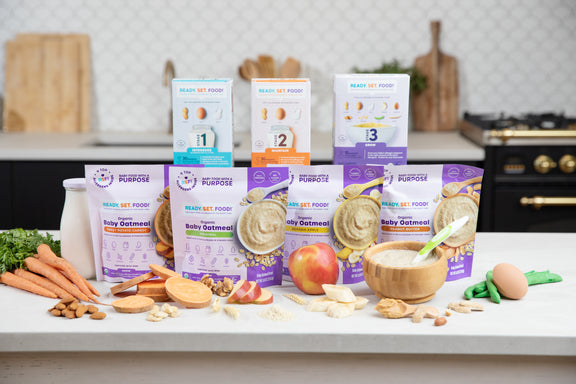Food allergies and food intolerances can cause similar symptoms, but the reasons behind them are very different. Learn how to tell the difference between a food allergy reaction and a food intolerance.
What causes a food allergy?
Food allergies always involve the immune system. Normally, our immune systems defend our bodies against foreign invaders that could harm us, like bacteria and viruses. But when someone has an allergy to a food, their immune system mistakes the proteins of that food for a foreign invader, and over-defends the body against the food whenever they eat it. This triggers an allergic reaction. Allergic reactions can range from mild to severe, and can be life-threatening.
Symptoms of a Food Allergic Reaction
Symptoms of an allergic reaction can occur seconds to minutes after eating a food. They almost always occur within 2 hours.
In young children, the most common symptoms of an allergic reaction are:
- Hives/red bumps
- Vomiting
Other mild to moderate allergic reaction symptoms include:
- Swelling of the face, lips, and eyes
- Redness/rash
- Itching
- Cough
- Sneezing
- Runny nose
- Stomach pain/abdominal pain
Symptoms of a Severe Food Allergic Reaction
Symptoms of a severe food allergic reaction can include:
- Swelling or tightness of the throat
- Swelling of the tongue
- Difficulty breathing
- Noisy breathing
- Difficulty swallowing
- Wheezing
- Persistent coughing
- Change in voice or cry
- Difficulty vocalizing
- Diarrhea
- Dizziness
- Collapsing or fainting
- Pale appearance
- Feeling floppy (only in infants and young children)
When symptoms of a food allergy are severe, and involve more than one organ system, this is known as anaphylaxis. This can be life-threatening. Immediately give an Epi-pen and call 911.
What causes a food intolerance?
A food intolerance (or food sensitivity) is an adverse reaction to a food that doesn't involve the immune system. They can have a wide range of causes. But, they don’t involve the body treating food proteins like foreign invaders. And unlike food allergies, food intolerances are hardly ever life-threatening.
Usually, food intolerances involve the digestive system.
Sometimes, the body can’t digest foods properly because it doesn’t have enough of the right enzymes. For instance, when someone has lactose intolerance, their small intestine doesn’t make enough lactase enzymes. Lactase is how the body digests lactose, the sugar found in cow’s milk. Someone whose body doesn’t have enough lactase enzymes can’t digest lactose properly. This causes digestive symptoms.
Other times, people with intolerances are sensitive to:
- Different chemicals found in foods
- Foods’ natural toxins that remain if a food isn’t cooked properly
Still other intolerances, like gluten intolerance, have unknown causes.
Symptoms of Food Intolerance
Symptoms of a food intolerance tend to emerge minutes to hours after eating the problem food. Some symptoms can take days to emerge, though.
The symptoms of different food intolerances vary, and can include:
- Diarrhea
- Gas
- Bloating
- Stomach ache
- Abdominal pain/cramps
- Nausea
- Vomiting
- Headaches/Migraines
Food Allergy vs. Food Intolerance
Food allergies and intolerances can cause similar symptoms. How can you tell the difference between a food allergy reaction and a food intolerance?
1. Presence of hives or itching = likely an allergy
Intolerances don’t cause symptoms like hives and itching, which are common symptoms of allergies.
2. GI symptoms only = likely an intolerance
Gastrointestinal (GI) symptoms), like bloating, gas, and abdominal pain, are common symptoms of food intolerance. But, these symptoms rarely occur by themselves when someone has an allergic reaction.
3. Anaphylaxis = allergy
Allergies can cause life-threatening anaphylaxis, but intolerances can’t.
4. Amount of food eaten
When someone has a food allergy, eating even very small amounts of the problem food can trigger an allergic reaction. But people with many (not all) types of food intolerances can eat small amounts of the problem food without suffering from symptoms.
These differences can be helpful in figuring out whether your child has a food allergy or intolerance. But, keep in mind that the only definite way to diagnose a food allergy is to have a doctor conduct an oral food challenge.
There aren’t any proven tests for food intolerance. So, avoiding the problem food and seeing if symptoms improve is the only way to check.

New Study Shows That Infant Anaphylaxis Usually Resolves With One Epinephrine Dose
A recent study has shown that, when infants experience severe aller...

Pregnancy Nutrition: What To Eat In The First Trimester
What to eat in the first trimester that will nourish your body, pro...

Formula Feeding Amounts: How Much Formula Should You Feed Baby Per Day?
How much formula should baby drink per day? It depends on their age...

What Baby Eats In A Day: 6-12 Months Old
Looking for ideas of what to feed your 6-12 month old little one? H...

What To Look For When Choosing An Early Allergen Introduction Solution
Medical guidelines recommend early allergen introduction – the earl...

Why are food allergies on the rise?
Food allergies significantly affect families’ quality of life. Why ...
All health-related content on this website is for informational purposes only and does not create a doctor-patient relationship. Always seek the advice of your own pediatrician in connection with any questions regarding your baby’s health.
These statements have not been evaluated by the Food and Drug Administration. Products are not intended to diagnose, treat, cure or prevent any disease. If your infant has severe eczema, check with your infant’s healthcare provider before feeding foods containing ground peanuts.










